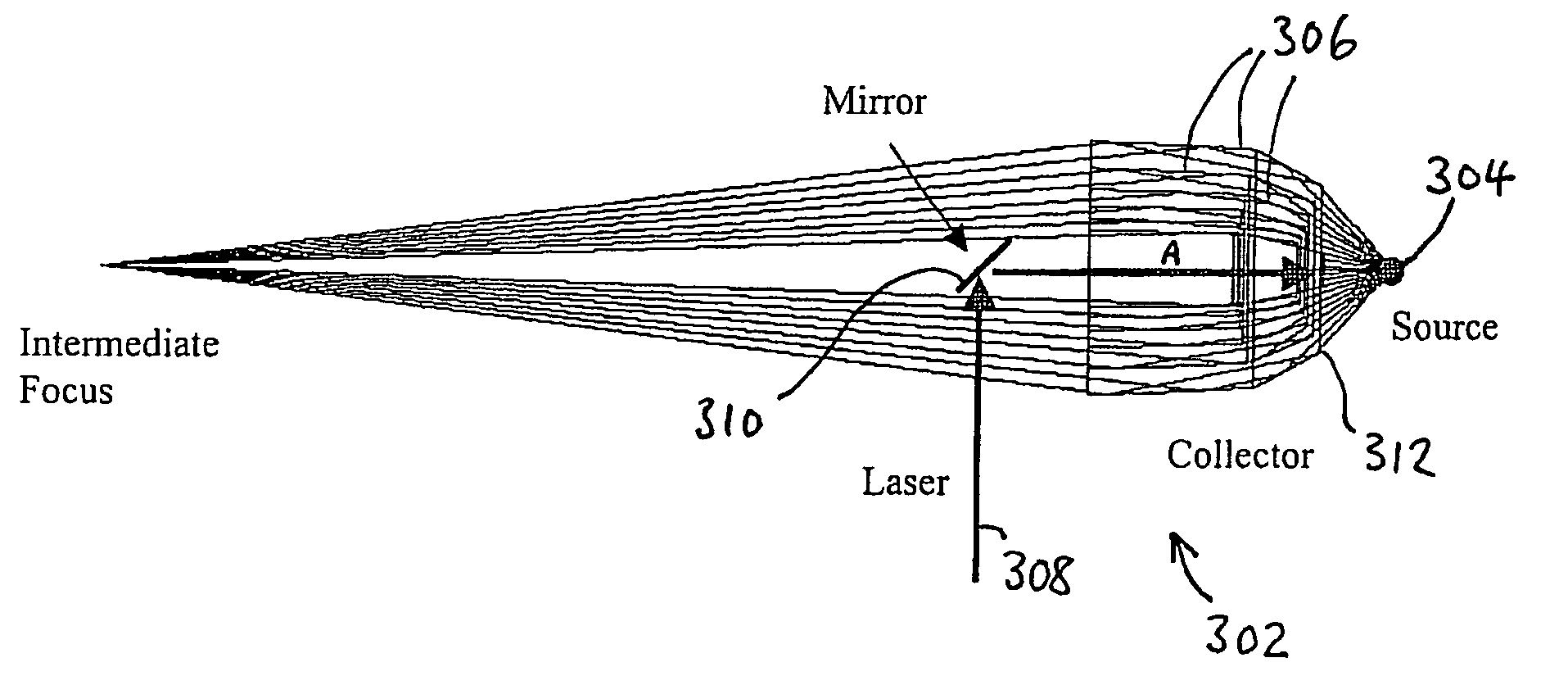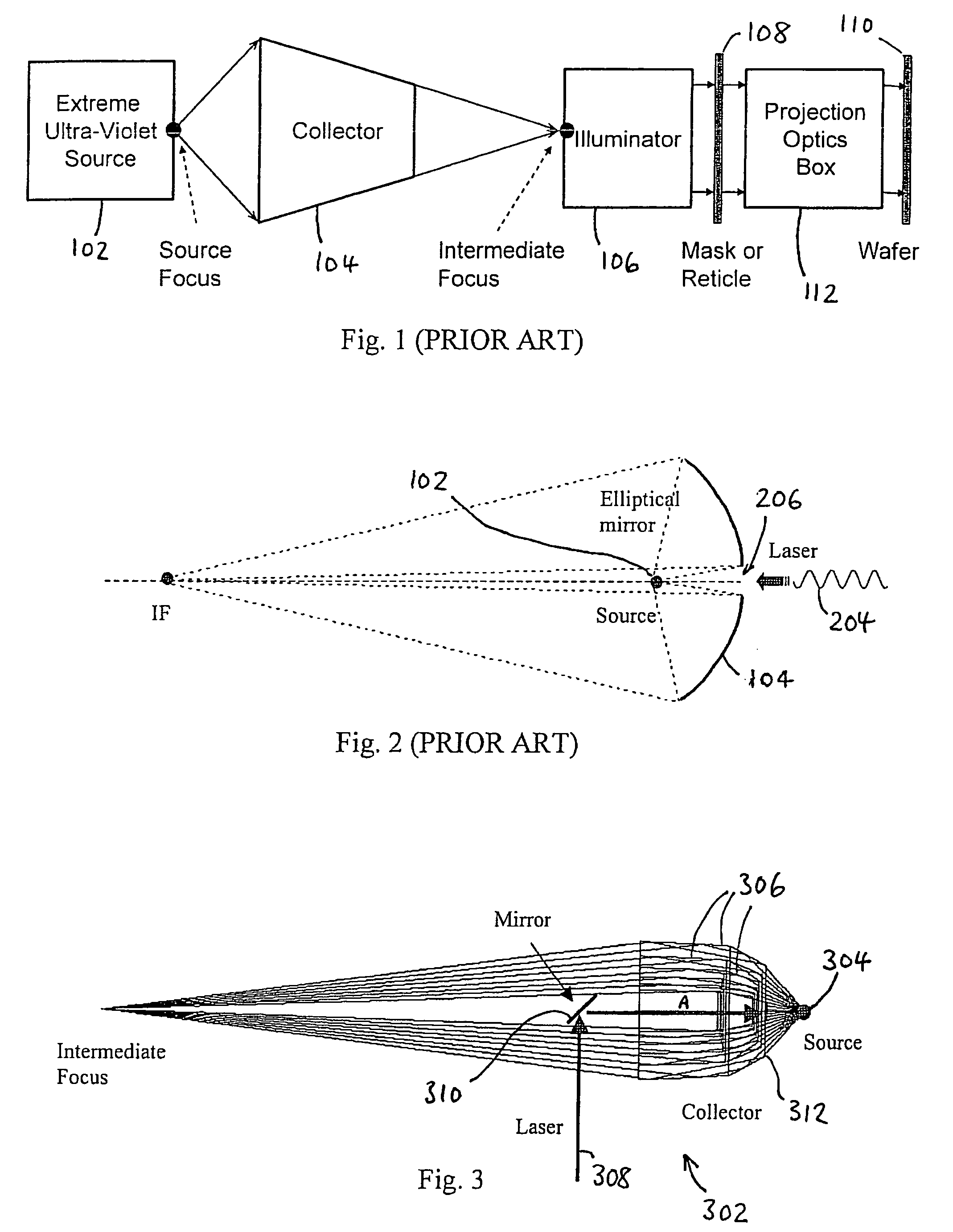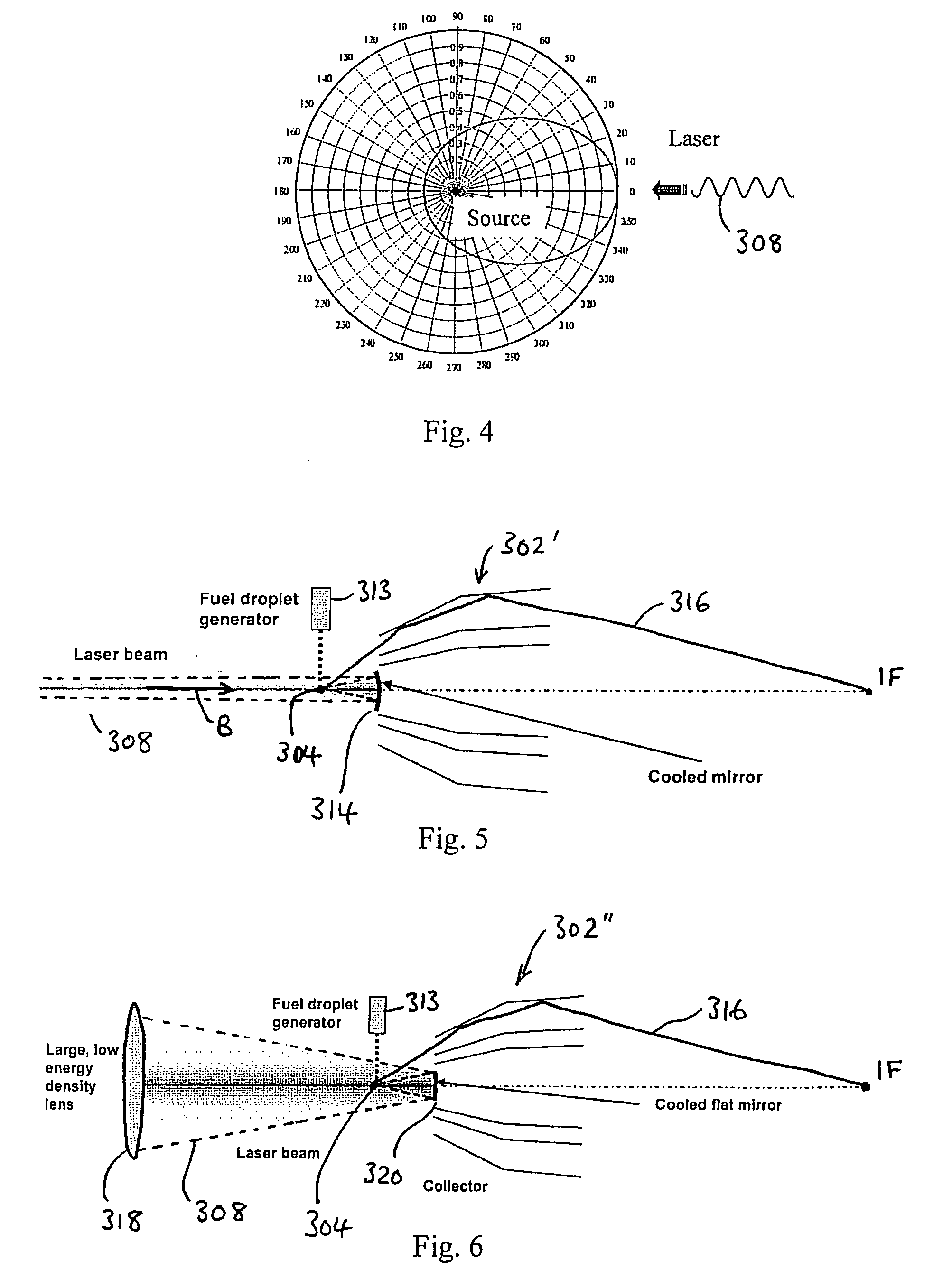Grazing incidence collector for laser produced plasma sources
- Summary
- Abstract
- Description
- Claims
- Application Information
AI Technical Summary
Benefits of technology
Problems solved by technology
Method used
Image
Examples
Embodiment Construction
[0063]In the description and drawings, like numerals are used to designate like elements. Unless indicated otherwise, any individual design features and components may be used in combination with any other design features and components disclosed herein.
[0064]In the illustrations of optical elements or systems herein, unless indicated otherwise, cylindrical symmetry around the optical axis is assumed; and references to an “image focus” are references to an image focus or to an intermediate focus.
[0065]FIG. 3 shows a grazing incidence collector 302 according to a first embodiment of the invention, for use with a LPP source 304. The collector 302 consists of a plurality of concentrically aligned mirrors or shells 306; in this embodiment, there are six mirrors 306, as shown in FIG. 3; however, it will be appreciated that any suitable number of mirrors may be used. Each mirror 306 may have the same or different design, including, but not limited to, Wolter, elliptical, “equal reflection...
PUM
 Login to View More
Login to View More Abstract
Description
Claims
Application Information
 Login to View More
Login to View More - R&D
- Intellectual Property
- Life Sciences
- Materials
- Tech Scout
- Unparalleled Data Quality
- Higher Quality Content
- 60% Fewer Hallucinations
Browse by: Latest US Patents, China's latest patents, Technical Efficacy Thesaurus, Application Domain, Technology Topic, Popular Technical Reports.
© 2025 PatSnap. All rights reserved.Legal|Privacy policy|Modern Slavery Act Transparency Statement|Sitemap|About US| Contact US: help@patsnap.com



